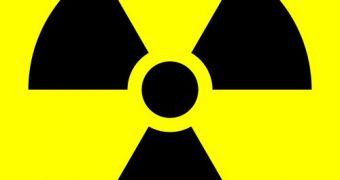In a study conducted on doctors who are constantly exposed to radiations, scientists have determined that the human body has the ability to develop defenses that counteract the negative effects of radiations on healthy cells.
This ability takes a lot of time to enter effect, and only applies to people who are exposed to small doses of radiations over prolonged intervals. Those who are exposed to a very high dose in a short interval cannot expect to benefit from this protective mechanism.
The new study was carried out on doctors who are regularly exposed to X-ray radiations emitted by specialized, medical imaging machines in the workplace. X-ray scanners and Magnetic Resonance Imaging (MRI) machines release small doses of radiations while they operate.
In the blood of physicians working under these conditions, researchers discovered red blood cells that contain elevated levels of the antioxidant glutathione. Apparently, this chemical plays a protective role against radiation exposure.
What the study did not establish was whether this adaptation has positive effects in the long run as well. This would indeed be something worth knowing, researchers comment about the new work.
Interestingly, elevated concentrations of this particular antioxidant make cells more capable of undergoing a process called apoptosis, or programmed cell death. This comes in handy when cells turn cancerous, which oftentimes happens due to radiation exposure.
National Research Council (CNR) senior research scientist and study investigator Dr. Gian Luigi Russo says that these adaptation may provide increased protection against cancer. However, this is currently just speculation, since only long-term studies will be able to confirm this.
Over 12 months, a technician operating medical imaging machines exposes himself or herself to the radiation equivalent of about 250 chest X-rays, LiveScience reports. The work is detailed in the Aug. 23 online issue of the European Heart Journal.
“After 30 years of work, this corresponds to a lifetime's increased risk of developing cancer of approximately 1 in 100, although there is still some uncertainty in these risk estimates,” the Italian team writes in the new paper.
Analysts say that these results are very interesting, as they may hint at a new potential target to be used in therapies against cancer. However, the work is still very preliminary, and many years will pass until treatments based on these discoveries are devised and approved for general use.

 14 DAY TRIAL //
14 DAY TRIAL //